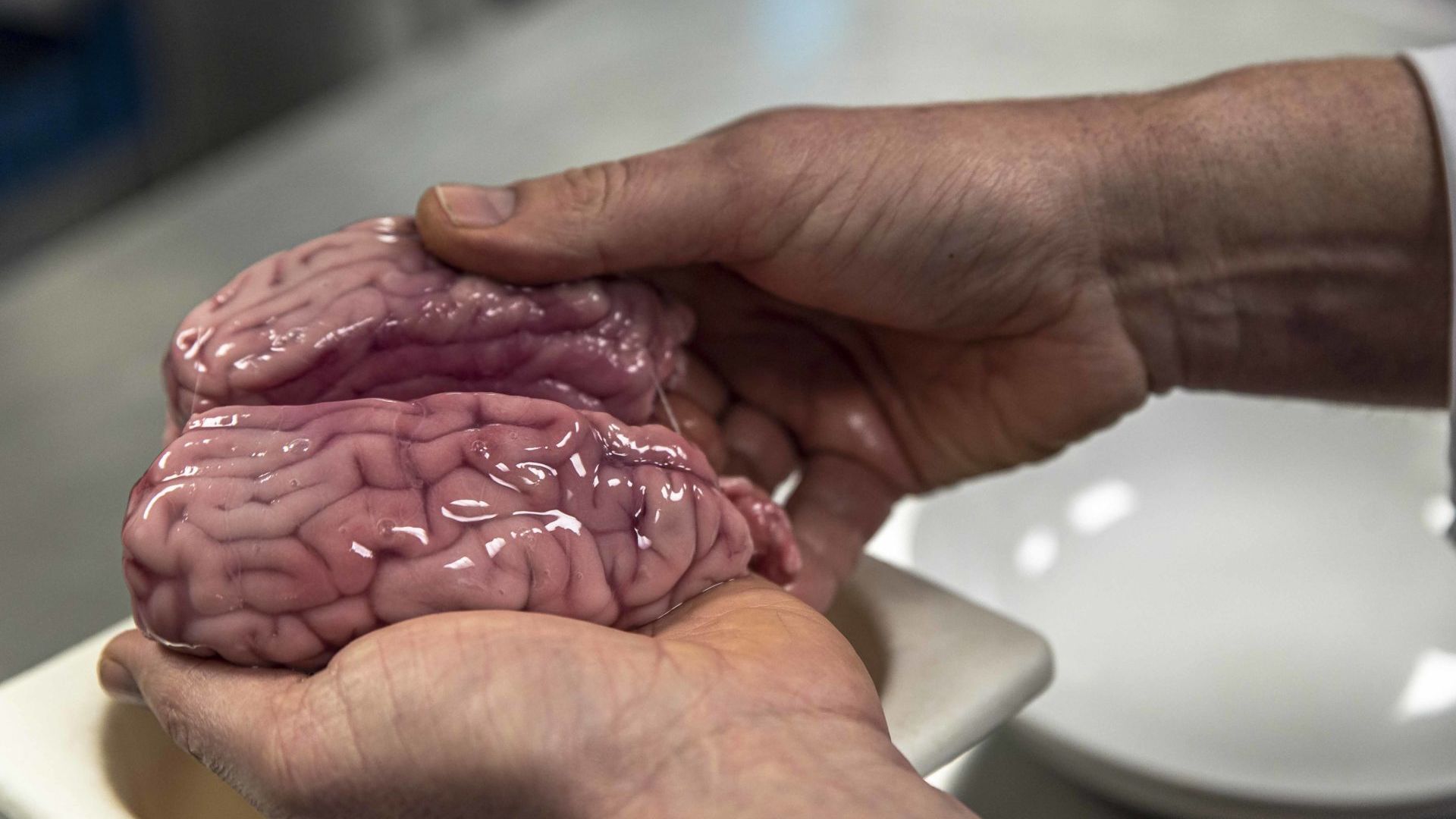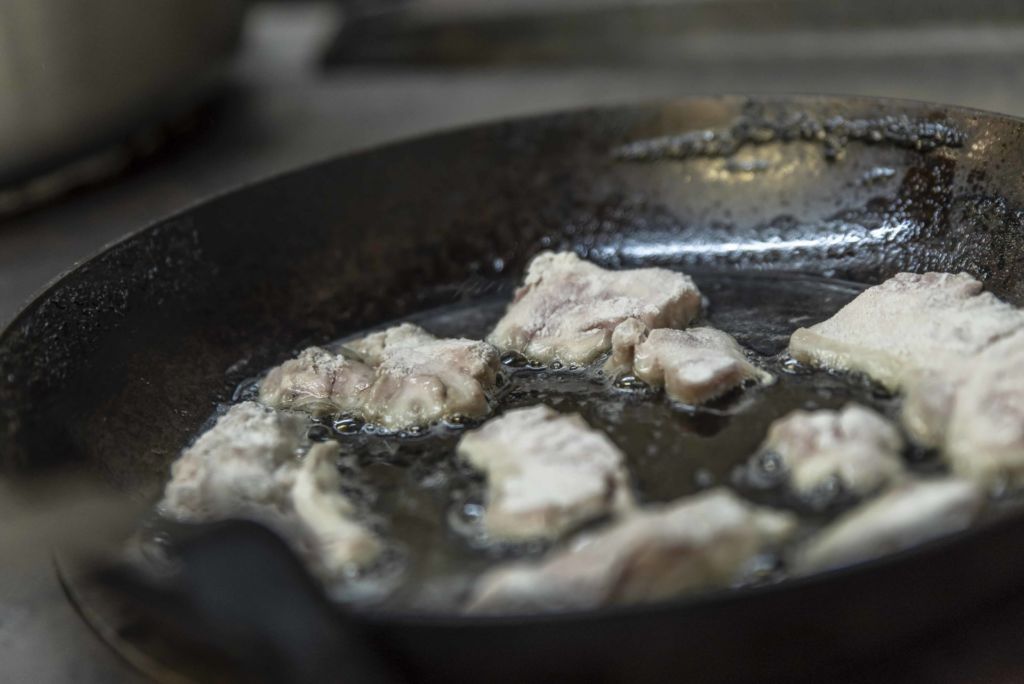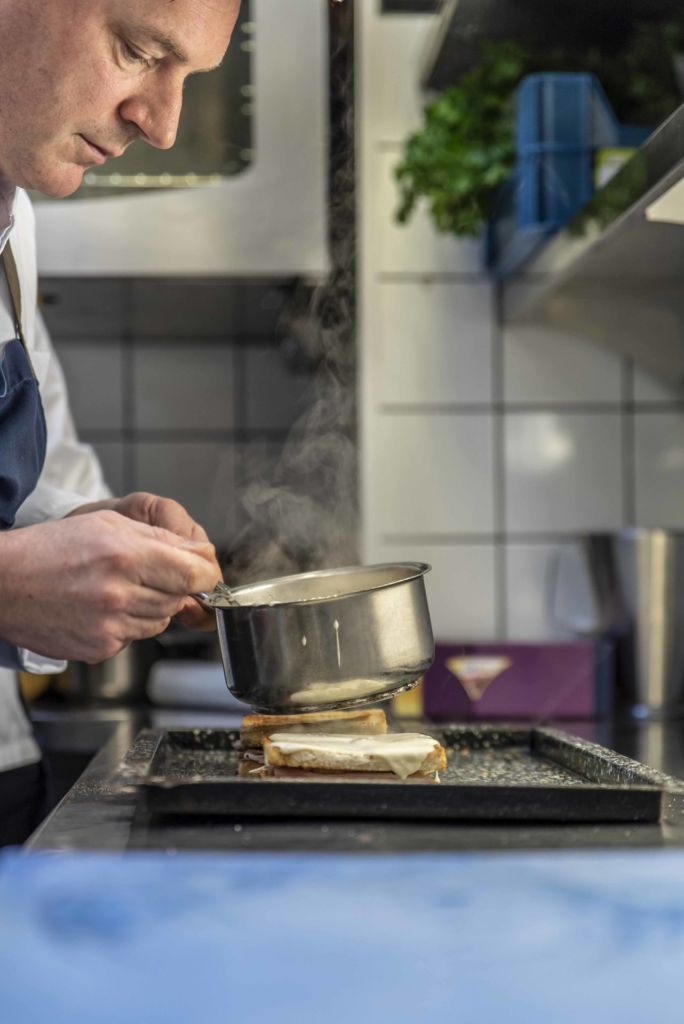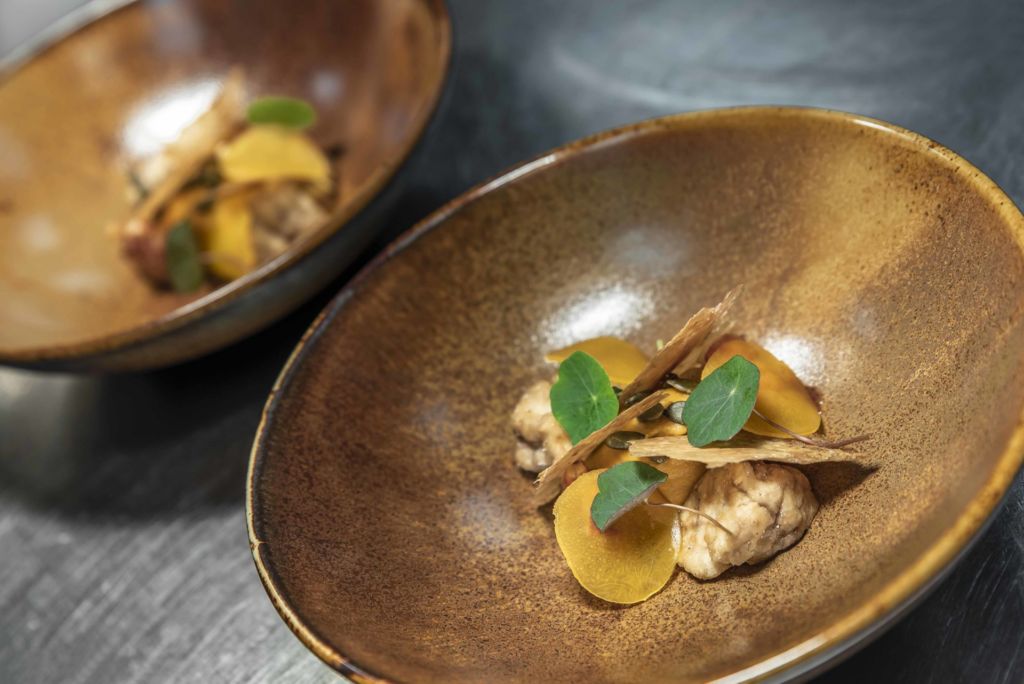Brains on your plate: soft and a bit spongy
-
 Foto: Julie de Bruin
Foto: Julie de Bruin
Ask the head chef of restaurant Vesters about ways to prepare calf brains and he’ll conjure up a croque monsieur and a dish of lobster, pumpkin purée and pieces of fried chicken skin.
First let’s consider the anatomy of the dead animal. In slaughterhouses calf carcasses – the rump and meaty limbs – are traditionally divided into four quarters. These are the large pieces of meat you get on your plate, like steak, ribs, or entrecote. Calf brains, like liver, kidneys and other organs, belong to the ‘fifth quarter’ less commonly used in the kitchen.
Creutzfeldt-Jakob
And yet brains have appeared on our menu since Antiquity. The Greeks and Romans didn’t have access to refrigerated transport. They preserved large pieces of meat by smoking, drying and pickling them. Smaller pieces of organ meat like the liver, kidneys and brains were more difficult to preserve, which made them a status symbol for people who could afford fresh meat. The Roman chef Apicius describes banquets where peacock’s tongues and parrot’s brains were served as delicacies.

Today, brains are no longer delicacies. Though they make an occasional appearance on restaurant menus in Belgium, France and Italy, in the Netherlands brains are seen as a waste product. Since the BSE scandal in the 1990s, calf brains have a bad reputation. People who ate infected beef risked contracting Creutzfeldt-Jakob disease. I must admit it’s one of the reasons I’m not particularly enthusiastic about this assignment, that and being a flexitarian.
It’s a pity, says chef Jeroen Vesters. He’s not one to eliminate meat from our diet, for reasons of professional interest, but also because it’s still our best source of protein. He does believe though that if you’re going to slaughter an animal, you should use all of it. ‘Don’t turn your nose up at parts that slide less smoothly down your throat,’ he says. According to Vesters, many people don’t know where the meat they eat comes from or which part of an animal went into their cutlet or chops. ‘I actually think anyone who wants to eat meat should first kill an animal themselves, just to feel what impact it has,’ he says.
Adagietto
From a culinary perspective, Vesters considers calf brains, which only cost five or six euros a kilo at a specialised butcher, as a challenge to prepare (at our request). ‘There’s only two ways to prepare a filet: well or badly. Organ meats require more imagination and skill.’ Although he prefers to work with liver or spleen, Vesters still finds calf brains very interesting. ‘Brains feel different in your hand to kidneys or hearts – it’s where personality is formed,’ he says. ‘It makes me feel a bit like Frankenstein when I work with them.’
In the kitchen of his restaurant, where five chefs are preparing dinner on this Friday afternoon, Vesters is making us a croque monsieur with calf brains. The inspiration for this dish comes from Flemish chef Johan Segers. ‘When asked in an interview about his favourite food-music combination, he answered ‘calf brains in a croque monsieur with a Mahler Adagietto’. This really stayed with me: a beautiful piece of classical music with such a strange but traditionally popular dish.’

As Mahler’s Fifth Symphony rings through the speakers, I’m served my croque monsieur: a slice of white toast with hot mustard, ham, cheese and small pieces of poached calf brains, the whole drizzled with béchamel sauce and a little bit of grated Manchego (‘less pronounced than Parmesan’), and briefly grilled in the oven.
Quite a culinary croque monsieur, as apparent from the taste: a simple but flavourful dish that would be a perfect cure for a hangover. The added value of the calf brains is not so much in their taste – you can hardly taste them in this dish – as in their texture: brains contain a lot of fat, which makes them soft and a bit spongy. If I didn’t know there were calf brains in this croque monsieur, I’d think it was just extra cheese. To accompany the croque monsieur, I’m offered a beer from Nijmegen brewery Oersoep called Sexy Motherbocker – a slightly sweet Bockbier with earthy tones to match the cheese in the croque monsieur.
Crunchy
On to the main course: calf brains, pieces of lobster, pumpkin purée, and crispy chicken skin. This beautifully presented ‘flavour palette’ makes a regular appearance on the menu at Vesters, but with chicken liver instead of calf brains. In this dish, the flavour of the brains, poached and briefly pan-fried, is more pronounced. On the outside the brain pieces are slightly crunchier and meat-like, but the inside remains very tender, a bit like tofu. The taste reminds me of fried chicken and counterbalances the strong flavour of the lobster and the creamy pumpkin purée.

With its floral nose and light sweetness, a glass of 2017 Chasselas Vieilles Vignes from the Schoffit Domain in the Alsace forms the perfect accompaniment to the dish. And what music should be served with this main course? Jeroen Vesters doesn’t hesitate for a second: David Bowie’s Heroes – the version by British heavy metal band Motörhead. ‘A great contrast to a refined dish.’
Conclusion: in both dishes the calf brains don’t dominate, but form a subtle element in a delectable composition. The chef passed with flying colours. And did we feel like Frankenstein? Not at all. Because they were not recognisable as such, but subtly woven into the dishes we had almost forgotten we were eating brains.
Restaurant Vesters, Groesbeeksedwarsweg 307, Nijmegen.



